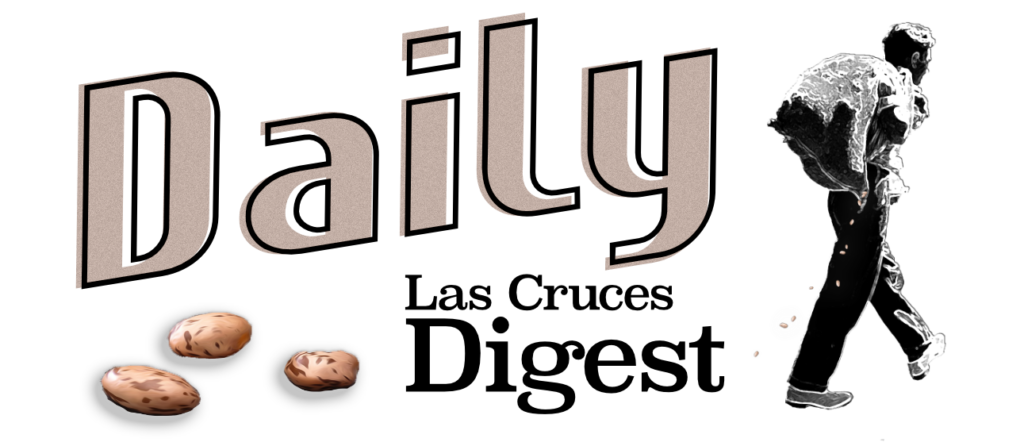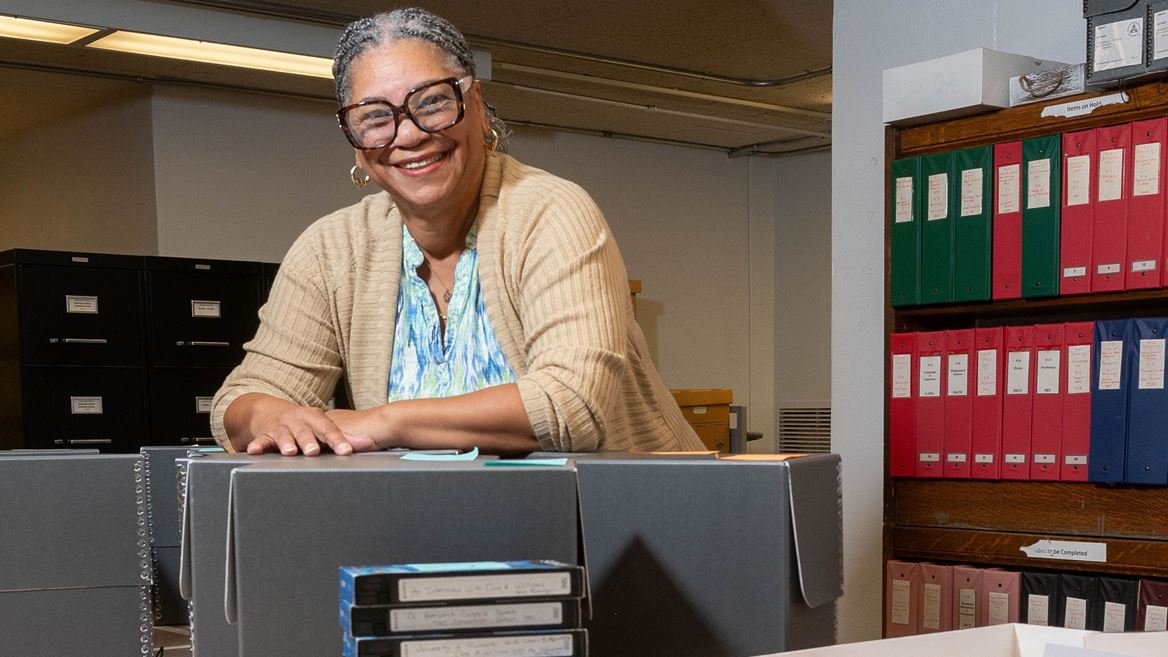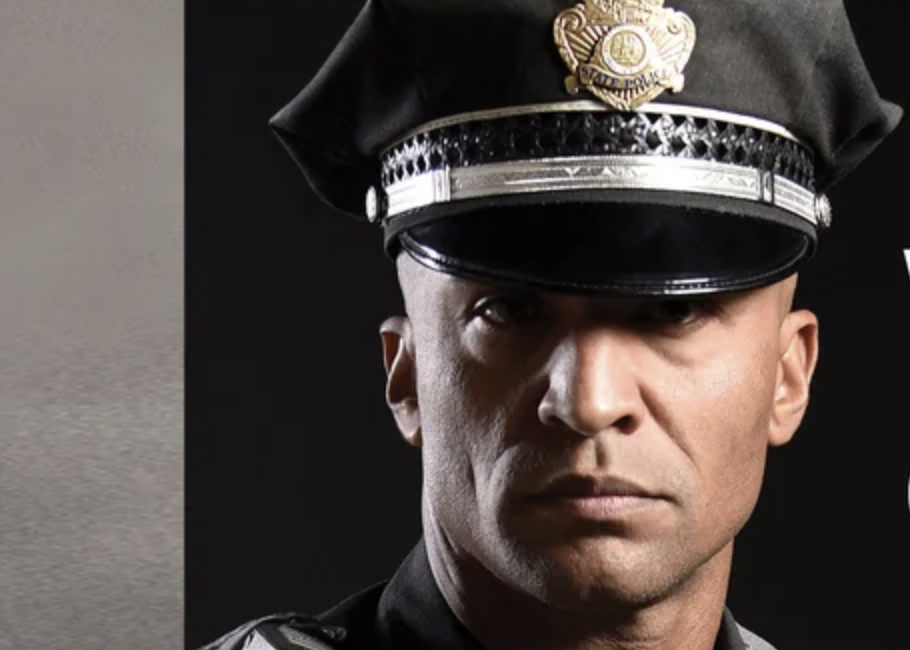Graduate student Lauretta King began her journey at New Mexico State University in spring 2022 by getting a job in the Black Programs office as an administrative assistant. Little did King know, her job would lead her to discover decades of stored historical documents and archive various documents that preserve decades of history of NMSU’s Black Programs, “Launching of a Legacy: Black Programs and Community.” (NMSU photo by Josh Bachman)
Source: NMSU News Release
DATE: July 23, 2024
WRITER: Tatiana Favela, tfavela5@nmsu.edu, 575-646-7953
Graduate student Lauretta King began her journey at New Mexico State University in spring 2022 by getting a job in the Black Programs office as an administrative assistant. Little did King know, her job would lead her to discover decades of stored historical documents and archive various documents that preserve decades of history of NMSU’s Black Programs, “Launching of a Legacy: Black Programs and Community.”

“Being part of this collection is a high point in my life. I’ve learned so much and to be able to share that; it’s an important element to all of this,” she said. “This is a Black Programs project but it’s also everyone’s project. I think historical preservation is one of the most important things that we can do to understand how we got to where we are.”
When King began her role as administrative assistant, the Black Programs office made a long-anticipated move from Garcia Hall to new office spaces at Corbett Center Student Union. Through that process, King found several file cabinets, desk drawers and boxes filled with papers, some dating back to the 1960s.
“There was a big gap, but it brought us all the way up to 2022,” she said. “I found out that those papers should’ve been moved out to be filed away decades ago. I requested consideration to archive Black Programs documents because I felt they held historical significance as a record of the existence and evolution of the African American community at NMSU. African American students have not comprised more than 4% of the overall student population but contributed to the richness of the NMSU experience. I honestly felt that losing or discarding these documents would be erasing an important part of the diverse past that is NMSU.”
King began relocating and preserving these historical documents as part of her graduate studies after receiving approval from Greg Armfield, department head of Communication Studies, and Teresa Maria “Linda” Scholz, NMSU vice president of Equity, Inclusion and Diversity.
During the fall 2022 semester, King dusted off and relocated the boxes that were stored for safekeeping to Branson Library with help from Dennis Daily, department head of Archives and Special Collections, where they will be permanently stored as a collection. Since then, she has been learning what it takes to professionally preserve and archive more than 50 years of Black Programs’ history.
“This has been amazing. I knew it was going to take some time, but the help, the support, the belief in the program and the project that I got from the Archives and Special Collections department has just been astounding,” King said. “I got an archiving 101 book that helped me know the right way to archive. I had to start from scratch literally, understanding the four different processes of taking it from boxes, all the way to making it a presentable research collection. It’s not for the faint of heart.”
King expressed that this project has taught her many things, including the importance of patience, but it also presented her with a unique personal experience.
“I’ve always said if you find something you love, it’s not work when you’re doing it. At this stage of my life, it’s good because I’m reliving portions of my own history in doing this,” she said. “I understand how I was living in the ’70s, the ’80s and ’90s, and I see it compared to the Black students in the Southwest who were finding their way. Navigating through newly changed laws and everything else that was going on. It was quite an adventure.”
Some of the most interesting documentation includes when Black Programs began at NMSU.
“Going back to the 1960s when the program was getting started, there was a lot going on in those periods of time.” she said. “Finding their expectations for what they wanted for Black people who were coming out of their communities into a brand-new environment and teaching the nuances of how to act and how to assimilate into a society that wasn’t their own.”
Other documents share how the university responded to shifts of outside influences, budgets and expenses, events, publication, recruiting and retention, federal and state law changes, and how Black students had to adjust to changing racial dynamics.
“It was totally foreign to them. You can change a law, but you can’t change a heart, so it was one of those types of things that I saw a lot of in the earlier moments of Black students entering this university at the level that they came in,” she said.
Through the years of stored Black Programs history at NMSU, King found about 20 years of history had been lost in a house cleaning project in 2003.
“When those were lost, it put more importance to make sure that these were safe and put out there where they could be found,” King said. “Even with a gap of time, many documents revealed the strong support system the Las Cruces community showed towards Black Programs, especially with funding.
“They would help with projects that they wanted to experience and there was a lot of involvement with donations and making sure things were staying on track. There was so much to learn about the symbiotic relationship between the university and the outside community and Black students. Bringing it all the way up-to-date now to where the voices of the students are heard. They’re heard and the actions may be limited, it may take time to figure out how they’re going to be done, but they’re heard.”
King shared that this project’s goal is not only document preservation, but to aid future university research and support NMSU’s Black community of students, faculty and staff to further develop their social and academic competence.
“To have something tangible, put your hands on, and understand that it is part of a process that brought you to where you are,” she said. “There were a lot of people that were ahead of their time, and we never get a chance to talk to them once people discounted what it was that they were bringing to the table. Now it’s time to look at those things. Where do you go to find it? Everything’s not always on the internet. Sometimes you got to get your hands dirty in the paper.”






